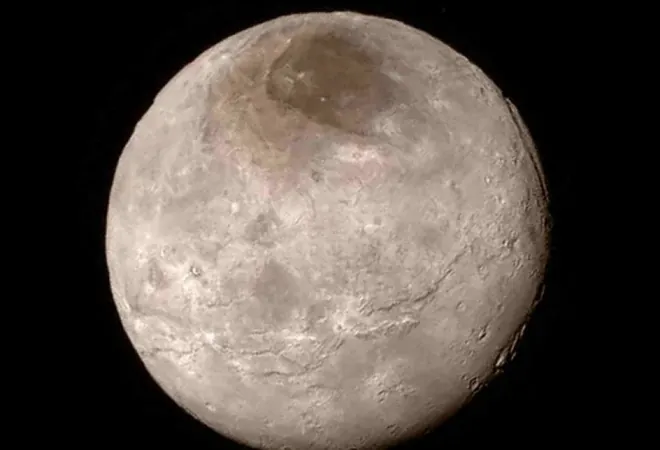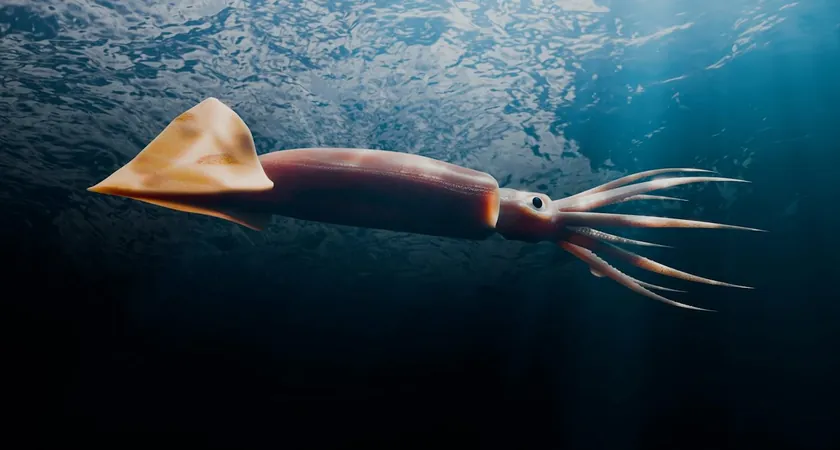
Groundbreaking Discovery: James Webb Telescope Uncovers Carbon Dioxide and Hydrogen Peroxide on Pluto's Moon Charon!
2024-10-02
In an astonishing breakthrough, the James Webb Space Telescope has unveiled vital insights into the makeup and evolution of Charon, the largest moon of Pluto, which is considered one of the dwarf planets in our Solar System. This discovery, reported by leading scientists, marks the first detection of carbon dioxide and hydrogen peroxide frozen as solids on Charon's surface.
Charon, which boasts a diameter of approximately 1,200 kilometers, is a colossal figure when compared to its dwarf planet counterpart, Pluto. For context, Charon is roughly half the diameter of Pluto and bears one-eighth of its mass, solidifying its status as one of the most significant moons in our cosmic neighborhood. Located about 19,640 kilometers away from Pluto, Charon presents a strikingly gray surface, interspersed with reddish-brown regions near its poles, believed to be rich in organic materials.
The Webb Telescope's findings build upon earlier observations made by NASA's New Horizons spacecraft during its historic flyby of the Pluto system in 2015. The Webb Telescope, which was launched in 2021 and began its scientific operations in 2022, is equipped with cutting-edge technology that allows astronomers to observe a broader range of wavelengths than ever before.
According to the researchers, the discovery of hydrogen peroxide is attributed to the radiation processes that Charon has experienced over billions of years. Meanwhile, carbon dioxide is believed to be a primordial element that may have contributed to Charon's formation nearly 4.5 billion years ago.
Scientists are also exploring the implications of these findings. They suggest that the water ice on Charon has undergone significant chemical transformations due to relentless exposure to ultraviolet radiation from the Sun, in addition to energetic particles originating from solar winds and cosmic rays. This has led them to believe that the carbon dioxide residing beneath Charon's surface may hold clues to the moon's origins, potentially linking it to the material that formed both Charon and Pluto.
This groundbreaking research not only enhances our comprehension of Charon's geological history but also opens new avenues for understanding the dynamic processes at play in our Solar System. Stay tuned as scientists continue to probe the depths of space, revealing more secrets of our celestial neighbors!
This discovery raises the thrilling question: What other hidden mysteries lie within the icy realms of our Solar System? Prepare yourself for more astonishing revelations as the James Webb Space Telescope continues its journey to uncover the universe's secrets!









 Brasil (PT)
Brasil (PT)
 Canada (EN)
Canada (EN)
 Chile (ES)
Chile (ES)
 España (ES)
España (ES)
 France (FR)
France (FR)
 Hong Kong (EN)
Hong Kong (EN)
 Italia (IT)
Italia (IT)
 日本 (JA)
日本 (JA)
 Magyarország (HU)
Magyarország (HU)
 Norge (NO)
Norge (NO)
 Polska (PL)
Polska (PL)
 Schweiz (DE)
Schweiz (DE)
 Singapore (EN)
Singapore (EN)
 Sverige (SV)
Sverige (SV)
 Suomi (FI)
Suomi (FI)
 Türkiye (TR)
Türkiye (TR)